How to Gather & Process Prickly Pear Fruit for Juice - Part 1
One of the most abundant wild plant foods of the American Southwest, this cactus straddles the domains of food and remedy as well as any other plant I know.
I have been needing to write this process out for some time now. I have been performing this process for over 15 years and I’ve been teaching it for over a decade.
I’m not going to say that this is the best process, but I will state that it’s more efficient at doing what it’s meant to do (turn fruit into juice) than 95% (or more) of what’s out there on the internet or in books. Of course, given one’s resources, readers may find some aspect that they can improve for themselves. I expect and admire that.
But, ultimately, this post is meant to clarify a great deal of misinformation or otherwise unnecessary information about turning prickly pear fruit into juice.
Like a great deal of the information available online for foraging wild plant foods, there is more regurgitation than there is original thinking. I would guess that 80% or more of the channels that post about foraging for wild plant foods are at least 3 years or younger. Let’s just say there’s a great deal more youthful enthusiasm than there is experience (believe me, I know, I’ve been there).
Let’s begin…
photo credit: @Jeff_Salzer
Prickly pear cactus (Opuntia species) are in fact native to all the lower 48 states, but they are most prevalent across the south, from coast to coast. The Sonoran desert, in particular, is a fantastic place to find a diversity of prickly pear fruit as well as a relatively high density of cactus. The latter being a result of over 100 years of overgrazing on public and private lands. But for better or worse, we have a great deal of prickly pear to work with in the Sonoran desert.
Each spring the prickly pear cactus come into bloom, to varying degrees. This year (2023) happened to be a fantastic year for prickly pear blooms. Despite the relatively hot and dry summer, we still have a great deal of prickly pear fruit as a result of our winter and spring rains coupled with this cactus’ ability to retain moisture amidst searing heat.
As the summer wears on through the Dog Days on into August, the prickly pear fruit begin to turn color into a spectrum of reds from maroon to purple, pink, brick red, and bright red in a variety of shapes from barrel, egg, fluted, narrow, fat, tall, or short.
Each summer, these ripening fruits inspire an enthusiasm by would-be foragers, bakers, jam and jelly makers, brewers, and confectioniers for the color of prickly pear fruit is almost one-of-a-kind, bringing a brilliant royal red to a plethora of creations.
But how does one process this prickly fruit all covered in stickers (spines and glochids)? Not to mention the intimidating terrain filled with rattlesnakes, scorpions, tarantulas, Gila monsters, and other spiny cactus ready to jump onto you.
What I’ve found over the years is a multitude of sources proclaiming the need to perform all sorts of prolonged and tedious tasks with a variety of tools and materials just to protect oneself from or remove the spines and glochids. But is this really necessary? I think not. No, not at all.
Commonly, sources claim that the spines must first be singed off. Well, yes, you could. But if you are simply looking to make juice, why bother? Well, of course, to keep them out of your juice, right? Ah, yes, but there are other simpler, more straightforward means for this.
What about protecting oneself from the unruly, spiny characters? Well, spatial awareness…and a pair of tongs. That’s it. That’s really all one needs. Not even gloves, really.
Gathering Prickly Pear Fruit
I have gathered and processed prickly pear fruit by the literal tonnage over many years and I can scarcely recall getting pricked or poked more than a handful of times (usually when I’ve become tired and find myself extending beyond my reach and I lose my awareness of where my body is in relation to the cactus around me).
Above, you see me gathering from the wild plant with my tongs to drop directly into my harvesting (5 gal) bucket. One can fit around 12-15 buckets, without stacking, into a conventional SUV or small pickup. When filling 5 gallon buckets, this would total around 300-450 lb of fresh fruit, depending on how well you pack the buckets.
I used to go straight to processing the fruit for juice, same day, before pasteurizing for storage, or freezing, if desired. Now I take those buckets directly to a walk-in freezer. Once fully frozen, those buckets of frozen fruit can be brought out to be thawed at room, outdoor, or refrigerated temperature ranges. Depending on which thawing location you choose, that will take anywhere from 8 hours to about 3-4 days. I prefer the slow method in a walk-in cooler or large fridge so the fruit/juice is not subjected to temps above 32-40F keeping the juice fresh and not exposed to temps which will induce fermentation.
Wait!
So before you begin gathering the fruit you really need to taste it. I have spoken with so many people who have tasted and or gathered prickly pear fruit themselves, that don’t even know that prickly pear fruit is not just sour but can also be sweet, albeit with minimal sugars.
photo credit: @Jeff_Salzer
First, is fruit selection. Well, before that is location selection. Each prickly pear patch, and to some extent plant, is going to have its particular fruit qualities, of which there are many.
Contrary to popular opinion, the main characteristic indicating ripeness of prickly pear fruit is NOT color. If there’s one indication of ripeness that I’ve found, it’s the stage at which a bent over fruit leaves its “collar” and a bit of its “foot” behind (See photo below).
ripe prickly pear fruit leaving “collar” and “foot” behind photo credit: @Jeff_Salzer
When the prickly pear fruit leaves behind its base onto the pad that it’s attached to when you bend it off at a right angle to its growth with your tongs, then you know it’s at or near its optimal ripeness (this stage may last for around 7-10 days for a particular cactus). BUT this does not necessarily mean that your fruit will be sweet.
If you have to pry a fruit off the cactus it is definitely NOT ripe. What you’ll very likely find is that this fruit will be sour, salty, maybe even bitter and not at all juicy, but will contain a slimy goop - and needless to say, not at all sweet.
When you pick a fruit that doesn’t leave behind a collar, then check the underside of the fruit to see if it’s still green on the bottom. This is not optimal, so it’s not a good fruit to sample. But you can include up to 5-10% of these into your harvest if you gather them accidentally (or, for example, this is your only chance to gather the fruit). The rest of the ripened, sweet fruit in your harvest will make up for the difference.
Sweetness of the fruit is dependent upon a few factors, in my experience. Primarily, it’s a matter of the cactus growing in a location that supports its full development. Although one can grow a wide variety of prickly pear in one location, it doesn’t necessarily mean that they will ripen to maturity as they may now be in a very different environment than where they are naturalized to. So gathering from wild prickly pear fruit enhances the capacity for that fruit to fully ripen to maturity because they are naturally occurring. HOWEVER, I have seen native, wild prickly pear fruit not ripen to sweetness - when it otherwise would - because the necessary conditions were not met. Essentially, there wasn’t enough sun to bring out the sweetness of the fruit. At least, that’s my theory from my local observations.
skinned fruit ready to sample
Once you’ve found some fruit that easily come off the cactus, and optimally, leave behind a “foot” on the pad, then now it’s time to sample.
I like to pull off a chosen fruit with tongs, then pierce it with a chopstick-sized stick (or just a whittled down chopstick, to a point) from the top of the fruit to serve as a handle while you peel back the skin and discard it. If done carefully, with a sharp paring knife, then you won’t need to bother with removing any spines (possible) or glochids (definitely present) as they’ll just come off with the peel.
Now you can set the fruit down upon a cutting board or plate to slice up or simply slice a piece off the end and give it a nibble. What do you taste? Is it something you like? Any sweetness?
You may even see some juice spurting out as you pick and skin the fruit which is definitely a good sign. Once you’ve found a patch of fruit that is ready and you like the taste of it, then you’re good to go. My preferred tools are two 5 gallon buckets and either 1 or 2 simple hinged tongs (no springs). You’ll, of course, need more buckets if there’s more to gather and you’re ready to receive it. But it works well to have a bucket in each hand, even if you don’t fill up each one on each trip. You could simply pour the fruit out into another bucket back at your vehicle or processing location, if within walking distance.
**Keep in mind, that you will need to have the time or resources to either get the prickly pear fruit into refrigerated or frozen storage within 4-12 hours of gathering (depending on your conditions). The more ripe the fruit, the quicker they will begin to spoil at room temperature. If you get them into refrigerated storage, they should be processed within 4 days or less to preserve freshness of the juice.
One thing to note about the ripening cycle of prickly pear fruit. The more diverse the local population is, the longer the harvesting season will be. In our area (@2500’ elevation in the Sonoran desert), the latest ripening happens up until the 3rd week of October. And these tend to be the juiciest fruit of the season, especially if there’s been ample sunshine and warmth in the final weeks leading up to this time.
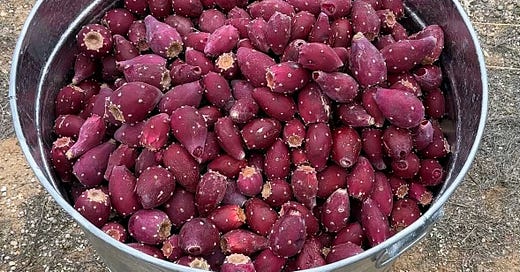



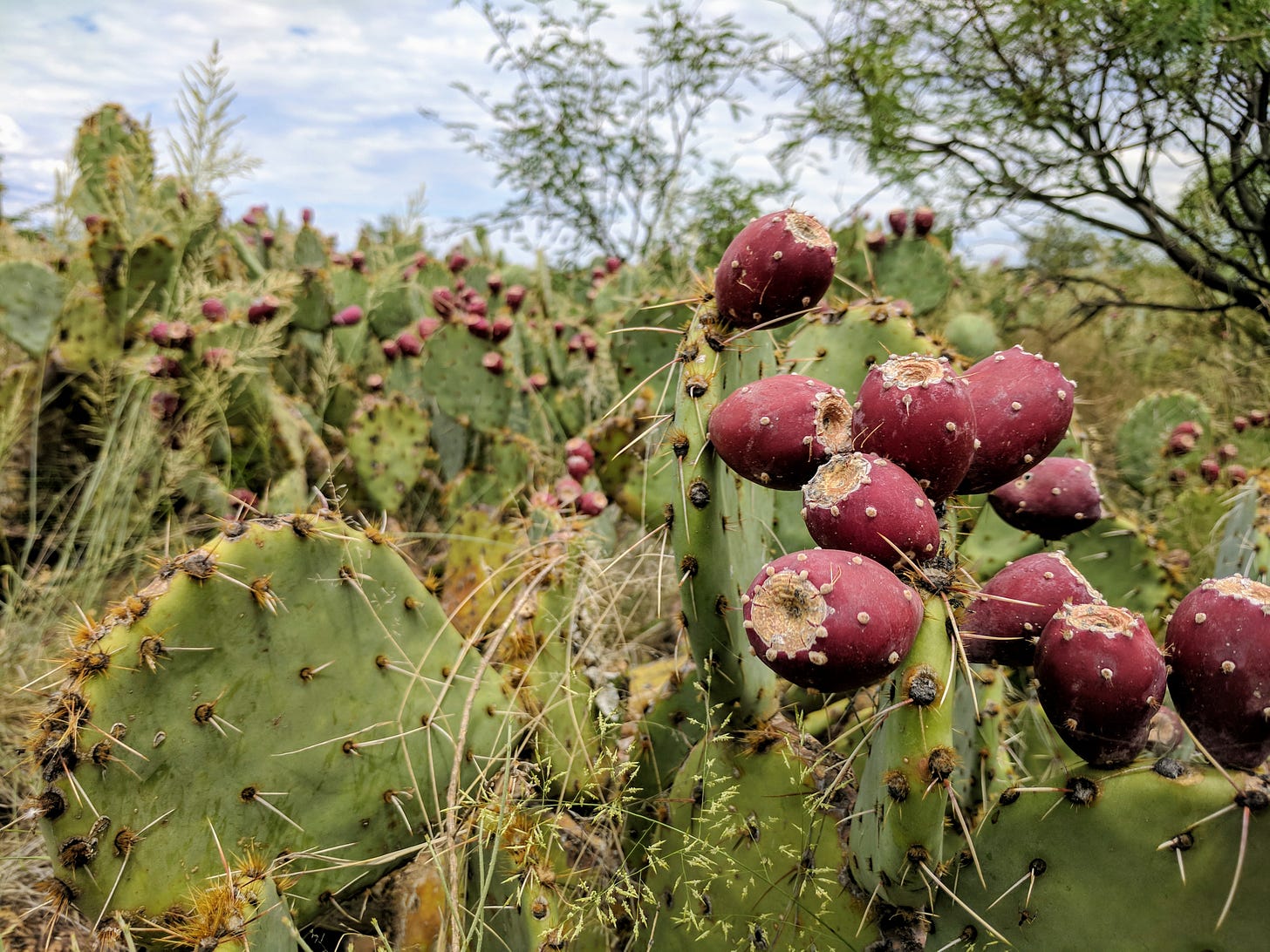

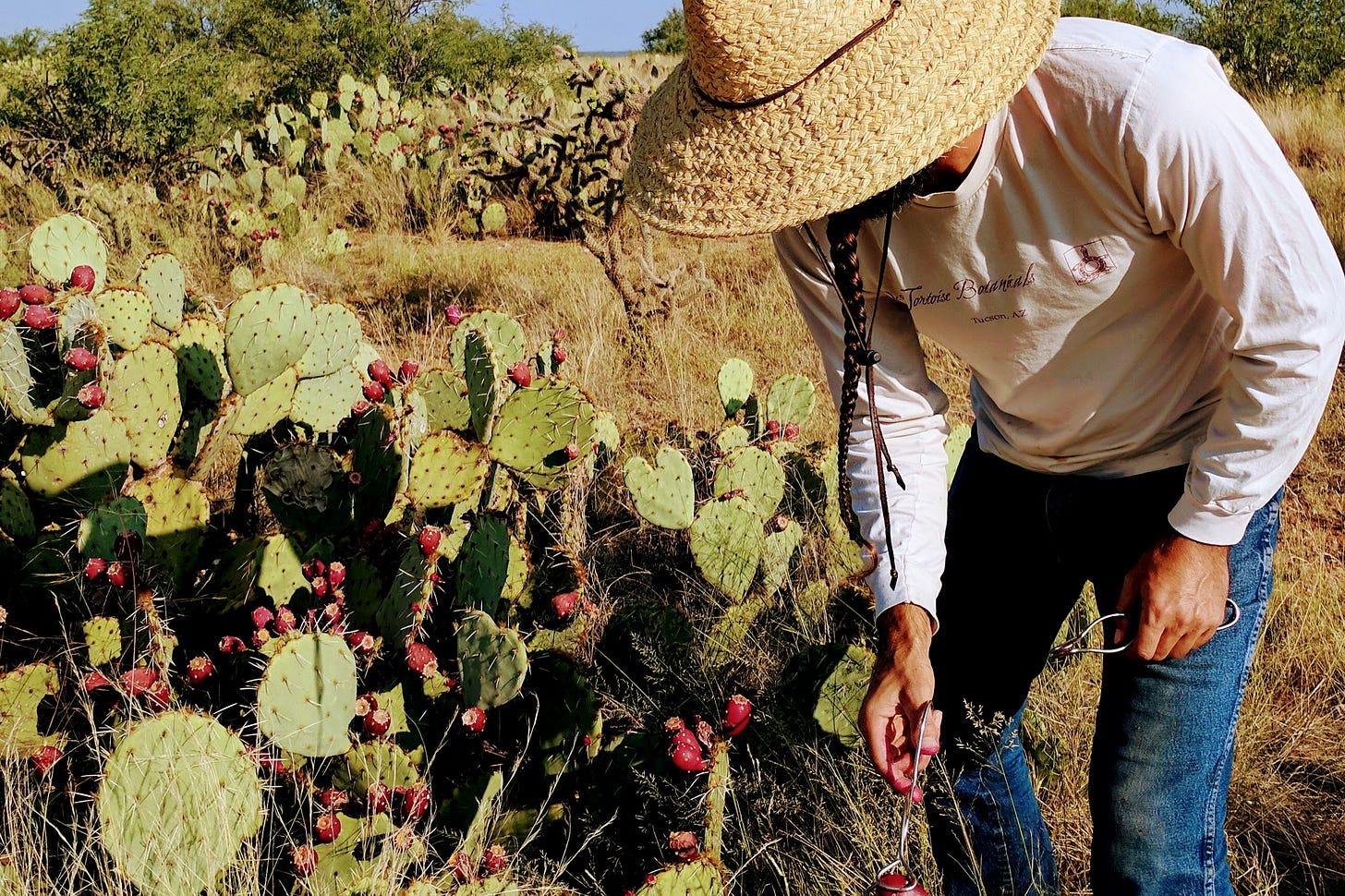
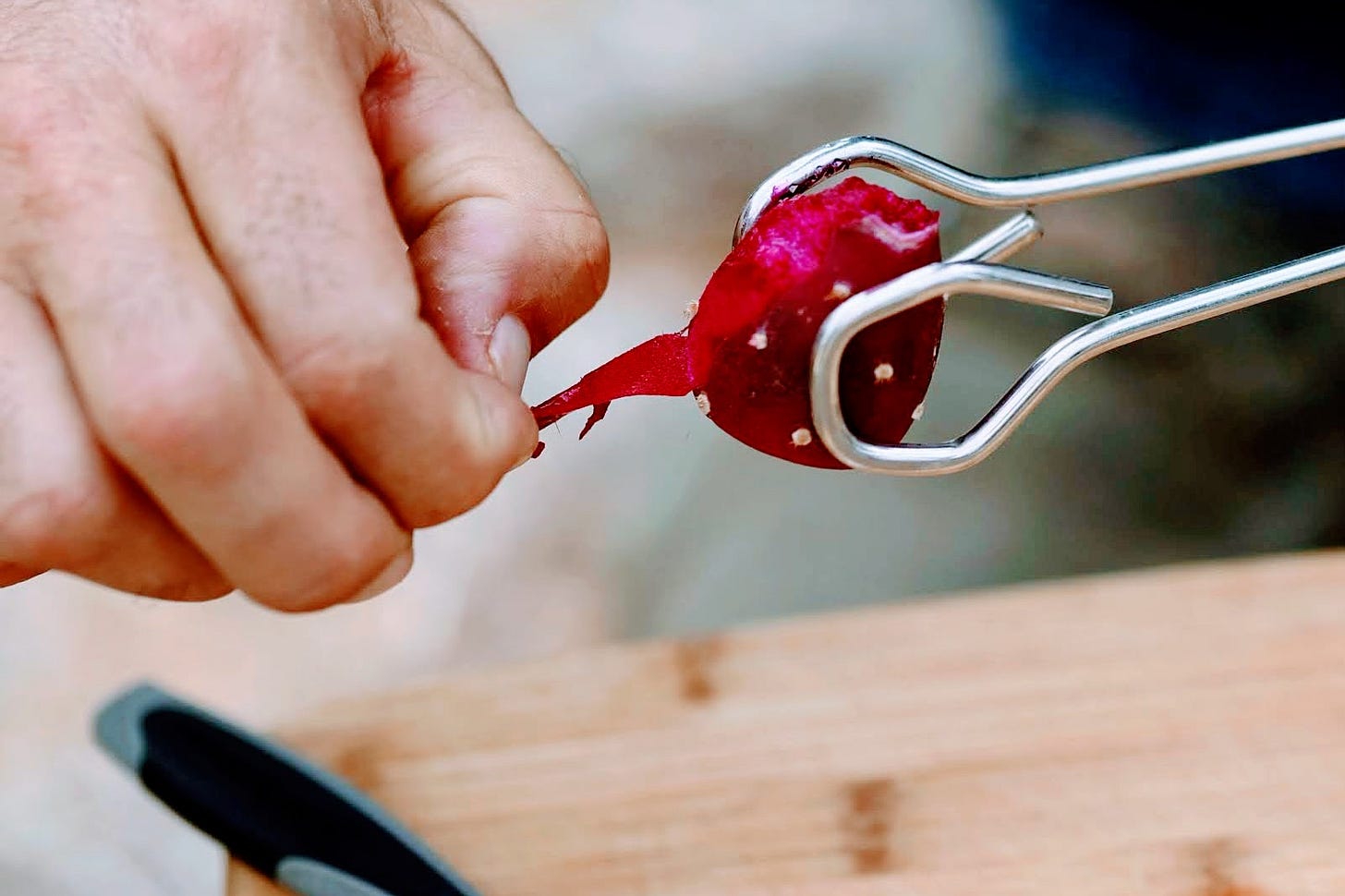
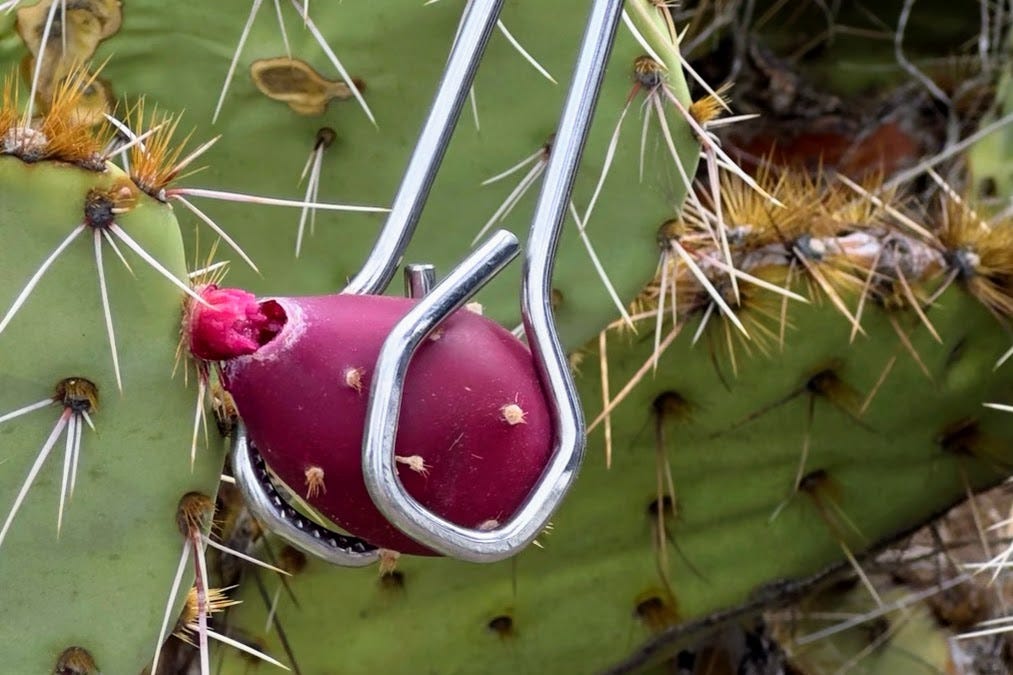
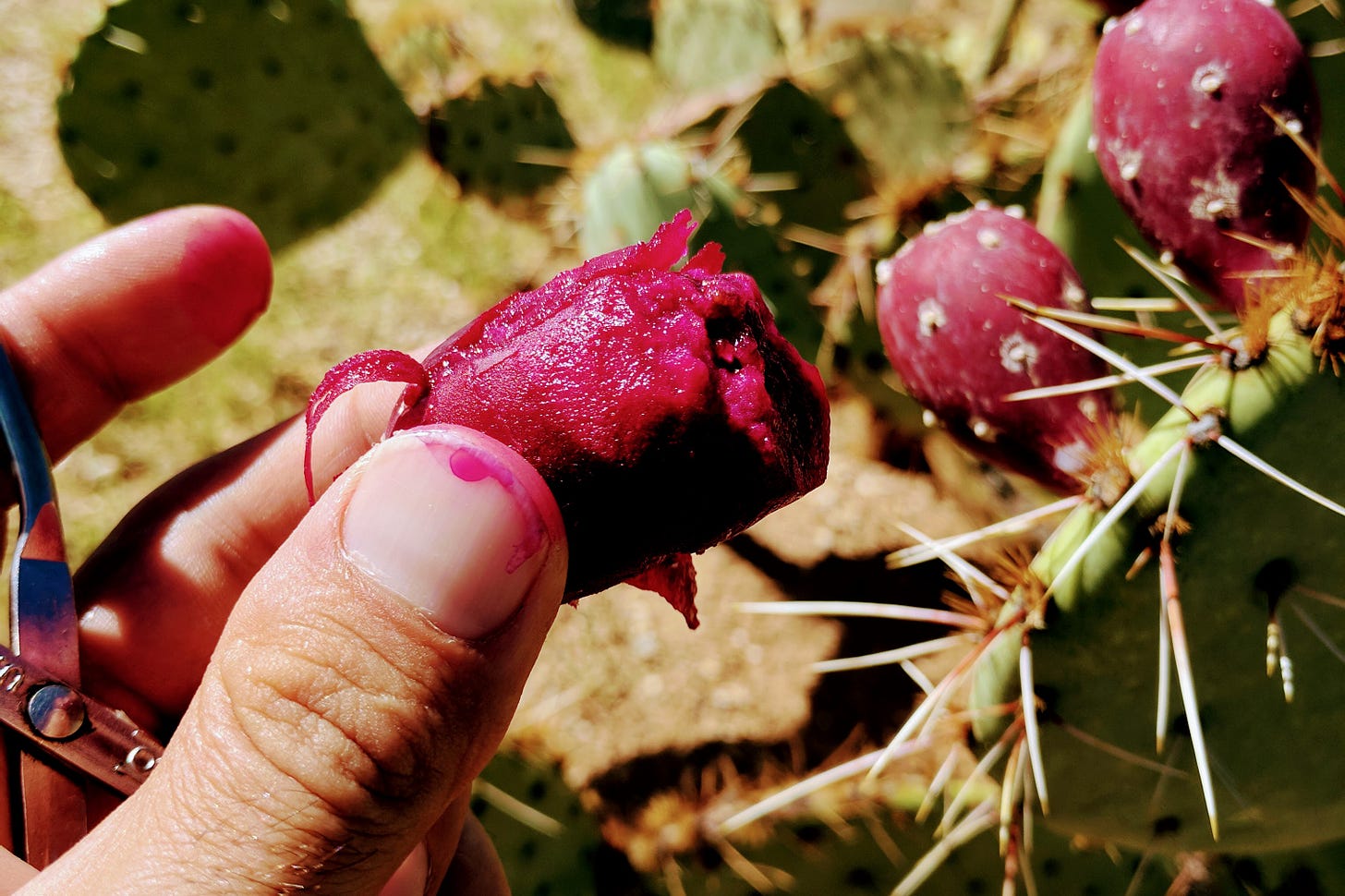
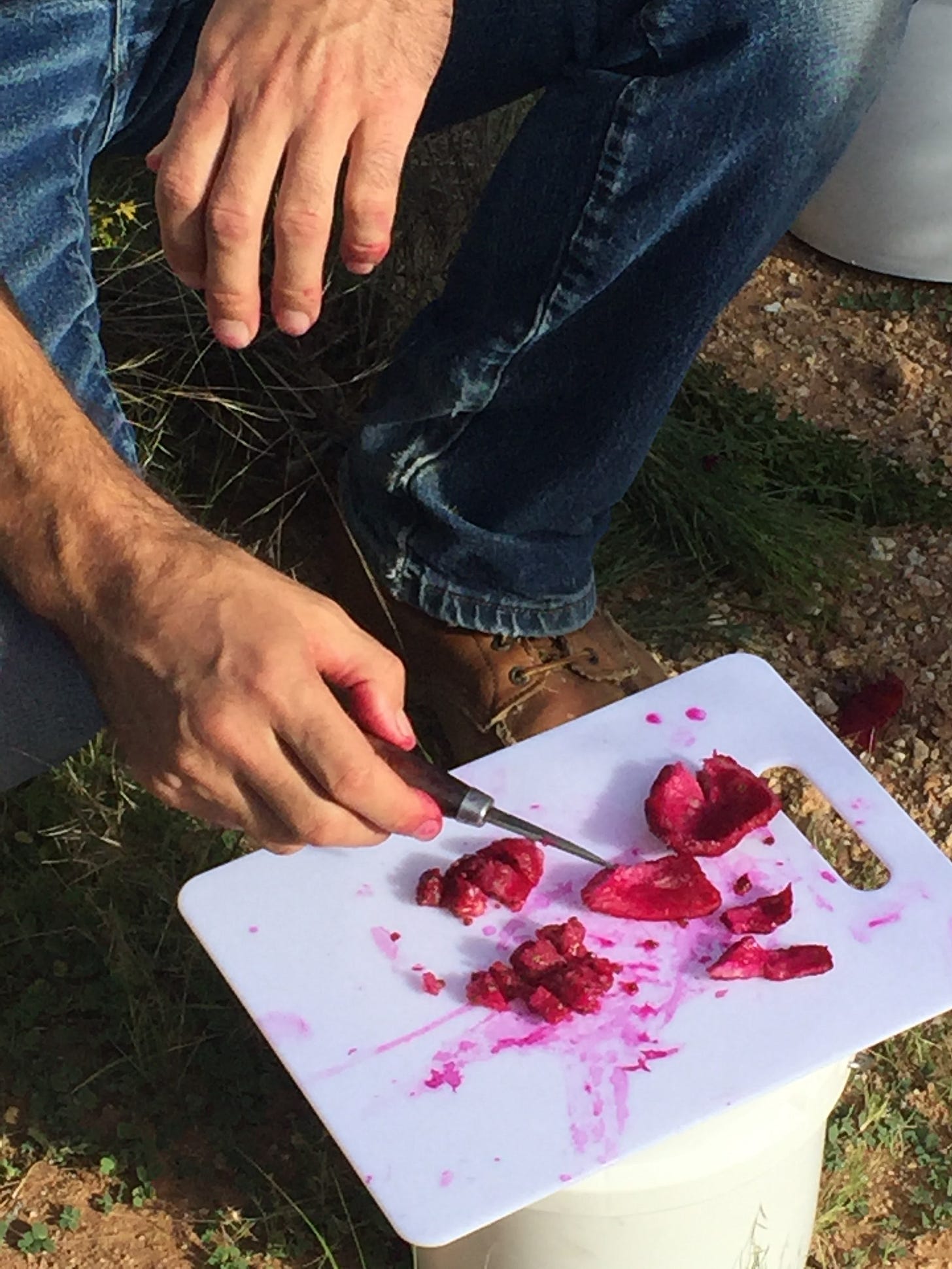
I got permission from a neighbor to harvest her fruits so I was thrilled to see this pop up. Can't wait for part 2!